
Movies directed by Joel and Ethan Coen characteristically include distinct atmospheres, quirky characters, witty dialog, and a good bit of cleverly executed violence. That’s why their works are some of Steve Rinella’s favorites.
When gunplay is in order, the Coens, who write, produce, and direct their movies, are notoriously obsessed with details. They accurately select firearms for the era and depict them realistically. But even the Coens can misfire and forget a detail here or there.
Firearms may be the only attribute of Coen Brothers’ films that appear more frequently than Frances McDormand. Let’s explore these extraordinary careers through their most firearm-loaded films.
“Blood Simple.” (1984)
Starring: Frances McDormand, Dan Hedaya, John Getz, M. Emmet Walsh
The Coen Brothers’ directorial debut is a Texas-set, neo-noir, crime thriller which they wrote, produced, and edited.
There’s a particular firearm that winds up in several characters’ hands throughout the movie: the Iver Johnson Revolver. One could even argue the gun is cursed.
Iver Johnson’s Arms & Cycle Works was established in 1891 and its most popular firearm was this top-break revolver featuring an early transfer bar safety. The example used in “Blood Simple.” has pearl grips and a nickel finish, a color pairing often seen on the guns in Coen Brothers movies.
The Iver Johnson first shows up as the self-defense gun Abby (McDormand) keeps in her purse. It ends up in the hands of her husband Marty (Hedaya), her lover Ray (Getz), and the private investigator (Walsh) before finding its way back to Abby. In a continuity error, the gun clearly changes to a nickel Smith & Wesson revolver for a close-up shot in Abby’s handbag.
At the end, we see the private investigator’s carry gun is a 9 mm Smith & Wesson 39 automatic when it clatters to the bathroom floor.
“Raising Arizona” (1987)
Starring: Nicolas Cage, Holly Hunter, Trey Wilson, William Forsythe, John Goodman, Frances McDormand, Randall “Tex” Cobb
This movie has a quirkiness and sense of humor that couldn’t be more different from “Blood Simple.” It walks a fine line between fantasy and realism that appealed to folks unsatisfied with the cookie-cutter blockbusters of the time. Plus, it has a whole lot more guns.
Curiously, no characters use a semi-automatic pistol, but there are a bunch of revolvers. Furthermore, nearly all the wheelguns are Smith & Wesson models.
Through most of the movie, Hi (Cage) uses a snub-nose S&W Model 36, which he keeps tucked in his waistband. He uses it to commit numerous robberies, like carjacking a pickup truck: “Son, you got a panty on your head.”
He keeps a larger .38 Special S&W Model 10 in his nightstand and Evelle Snoats (Forsythe) uses a Model 10 to rob a convenience store. Ed (Hunter) also carried a Model 10 as her sidearm when she was a cop.
When Hi robs a convenience store, the clerk gets his Dirty Harry on, firing back with a stainless .44 Magnum S&W Model 629. The police officer who chases Hi and Ed after the supermarket robbery shoots at them with a .357 Magnum S&W Model 65 (firing way more shots than the six-round cylinder can actually hold).
Nathan Arizona (Trey Wilson) uses the only non-S&W revolver in the movie, a second-generation Colt Single Action Army revolver with a 7.5-inch “cavalry” barrel.
There are a good number of shotguns in “Raising Arizona,” too. Gale (Goodman) and Evelle Snoats carry Ithaca 37 pump-actions for their bank robbery in La Grange. On a couple occasions, Hi uses a Remington 870 pump gun with a 20-inch barrel.
Another store clerk fires at Hi with a side-by-side break-action shotgun, but the most infamous guns from this film are the twin Rossi Overland side-by-sides with exposed hammers carried by the demonic biker, Leonard Smalls (Cobb).
He keeps them at the ready in twin scabbards on his back, and both guns have been modified with a bar connecting the spurs of the exposed hammers. This means Smalls can cock both hammers simultaneously. It also means both barrels have to be fired simultaneously. On his vest, along with shotgun ammo, Smalls carries a number of prop WWII-era Mk 2 hand grenades.
“Miller’s Crossing” (1990)
Starring: Gabriel Byrne, Marcia Gay Harden, John Turturro, Jon Polito, J.E. Freeman, Albert Finney
For their third film, the Coen Brothers returned to noir, but this time with a Prohibition-era gangster flick focusing on the power struggle between rival gangs in a nameless city. Like so many of their movies, it’s partly a love letter to the genre films of old. And it was this film that established the Coens as respected filmmakers.
Guns are everywhere in “Miller’s Crossing.” The Sons of Erin gunfight alone features all kinds of period-correct weapons, including a water-cooled Browning M1917 machine gun. Again, the Coens favor revolvers over automatics, which suits the time period.
Bernie Bernbaum (Turturro) regularly carries a WWI-era Colt M1911. In some shots, you can see the lanyard loop and the straight mainspring housing, indicating it is not an M1911A1.
Johnny Caspar (Polito) uses the vintage slang term “Rosco” to refer to the Colt Model 1903 Pocket Hammerless he carries. That’s the nickel-and-pearl gun for this Coen Brothers movie—and it’s also the gun Reagan (Byrne) uses after Caspar is dead to finally take care of Bernie.
There are a few period-correct guns in “Miller’s Crossing” that don’t often show up in movies, like the Astra 400 pistol Tic-Tac gives Reagan, or the CZ 27 pistol one of O’Bannion’s doomed bodyguards has at the ready on a table. Verna (Harden) uses a break-top S&W Safety Hammerless revolver, known as the Lemon Squeezer because of its grip safety, an uncommon feature on revolvers.
It’s interesting to note that nearly all the revolvers in this movie are quite sizable guns. Verna uses the aforementioned full-size S&W, Leo O’Bannion (Finney) uses a large Colt New Service revolver when he’s attacked in his mansion, and Eddie Dane (Freeman) uses a Webley Mk VI throughout the movie. There are also a few long-barreled S&W Model 10s and a Colt Police Positive. Vera is the only character to use a snubby revolver, a Colt Police Positive, when she threatens Reagan but can’t bring herself to shoot him.
The most famous scene in the film is undoubtedly O’Bannion fighting off assassins at his home with an M1928 Thompson, because what would a Prohibition-era gangster movie be without a good Tommy Gun scene?
While the Thompson O’Bannion uses is feeding from a 100-round drum magazine, if one pays very close attention, the gun fires about 700 to 800 rounds total without being reloaded. It’s so obvious that it seems intentional, and the movie’s sort-of-fantasy air makes it utterly forgivable. A number of other gangsters and police officers are also armed with Thompsons throughout the movie.
“Fargo” (1996)
Starring: Frances McDormand, William H. Macy, Steve Buscemi, Peter Stormare
After a string of period movies, the Coens finally made a contemporary crime thriller in ’96, set in Minnesota and North Dakota. This hard-boiled tale of two bumbling kidnappers, a failed nobody at the end of his rope, and a very clever and very pregnant police chief proved to be their first breakout hit. The critical and box office success garnered seven Oscar nominations and two statues, including best screenplay and best actress (McDormand).
The two hired kidnappers, Gaer Grimsrud (Stormare) and Carl Schowalter (Buscemi), share a nickel-plated SIG-Sauer P226 throughout the movie. However, both times the gun is used on screen, it’s being fired at an actor at extremely close range, so the P226 was swapped out in these shots for a flash-paper non-gun, as blanks would have been too dangerous.
Brainerd Chief of Police Marge Gunderson (McDormand) carries a snub-nose S&W Model 36 as her duty sidearm, which she wears in a shoulder holster on account of being too pregnant for a duty belt. In a brief glimpse, after she shoots Gaear during the famous woodchipper scene, Gunderson’s revolver turns into a much larger S&W Model 19 in a continuity mistake. It’s likely the same Model 19 that Wade Gustafson (Harve Presnell) uses earlier when attempting to pay the ransom for his daughter.
“The Big Lebowski” (1998)
Starring: Jeff Bridges, John Goodman, Steve Buscemi, Julianne Moore, Phillip Seymour Hoffman
Even people who don’t particularly like the Coen Brothers’ style love this stoner detective comedy. It was another box office disappointment that slowly built a monstrous cult following when the movie hit home video, spawning a convention and even a religion. Since this is (mostly) a comedy, there isn’t too much gunplay, but there is one eternally memorable scene involving a 1911.
At the bowling alley, when Smokey’s foot slips over the line on a roll during a league game, Walter Sobchak (Goodman) simply will not let it stand. Whether Walter really thought Smokey committed a foul or if he was lashing out because The Dude (Bridges) challenged him about his weird relationship with his ex-wife and her dog, the result is the same. He reaches into his bowling bag, pulls out a Colt M1911A1 pistol and gives Smokey a fairly simple ultimatum that he repeats as he chambers a round and points the .45 at his head: “If you mark the frame an eight, you’re entering a world of pain.”
Later, when The Dude goes to hand off the ransom for kidnapped Bunny Lebowski (Tara Reid), Walter tags along toting what he says is “an Uzi” in a brown paper bag, though we never see it and he drops the bagged gun when he jumps out of The Dude’s moving car. This results in a movie gun cliché I hate: The Uzi chain fires a whole magazine while spinning after simply hitting the road.
When Walter, Donny (Buscemi), and The Dude are confronted by the three nihilists at the end of the movie, one of the Germans is armed with a submachine gun. A lot of people don’t realize this because the scene is pretty dark, but Kieffer (Flea) is holding an appropriately German Heckler & Koch MP5K, a compact version of the widely used H&K MP5. He drops the gun when Walter hurls a bowling ball at his junk.
“O Brother, Where Art Thou?” (2000)
Starring: George Clooney, John Turturro, Tim Blake Nelson, John Goodman
This loose adaptation of Homer’s “The Odyssey” is set in 1937 rural Mississippi and follows three convicts escaped from a chain gang as they embark on a quest through the American South.
Most of the armed police and prison guards in the movie carry shotguns, including Browning Auto-5 and Remington 11 with short barrels. One deputy is shown with a Remington 870 shotgun, an anachronistic firearm for 1937 (the Model 870 was introduced in 1950).
Several of the posse chasing the boys carry Thompson M1928 machine guns with drum magazines. When the posse’s van catches on fire, we see it’s filled with ammunition and Tommy guns. The fire, somehow, causes the guns to just start firing in full auto on their own, which is highly unlikely.
Babyface Nelson (Michael Badalucco) also carries a Tommy gun, which he refers to has his “choppa.” It jams several times as he shoots at cows and cops from a moving car, forcing him to manually work the bolt.
Finally, Cousin Wash’s son (Quinn Gasaway) uses an M1903 Springfield bolt-action rifle to defend the Hogwallop farm.
“No Country for Old Men” (2007)
Starring: Josh Brolin, Javier Bardem, Tommy Lee Jones, Woody Harrelson
This adaptation of Cormac McCarthy’s classic novel was the most grounded, and some would argue the best dramatic film, of the Coens’ varied career. Yet again, it’s a period movie, this time set in 1980. It also garnered the brothers the most awards of their career: eight Academy Award nominations and four wins, including best picture, best director(s), and best screenplay.
On the firearms side, this movie uses a lot of guns that weren’t around back in ’80.
When we meet protagonist Llewelyn Moss (Brolin), he’s hunting pronghorn with a scoped Remington 700 bolt-action rifle before he comes across an ill-fated desert drug deal and a lot of dead bodies. In addition to a bag of money, he takes a nickel-plated, full-size 1911 pistol and a Heckler & Koch SP89 submachine gun, standing in for the H&K MPK mentioned in the book. He’s still carrying the 1911 when he returns to the location and uses it to defend himself against a charging pitbull.
There are a number of guns on the ground amidst the dead bodies in the desert, including a MAC-10, an IMI Uzi, a Norinco Type 56 copy of an AK-47, and a Norinco Type 56-1.
Sheriff Bell (Jones) also carries a 1911, but his is a Colt Series 70 Combat Government Model. In the book, he carried a single-action revolver in .44/40.
When Llewelyn is on the run and preparing to face the assassin and general psycho Anton Chigurh (Bardem), he buys a 12-gauge Winchester Model 1897 Field pump shotgun and later uses a hacksaw to cut down the barrel and stock so it will fit in his duffel bag. He also attaches a sling so it can be more easily carried and fired from the hip.
Chigurh uses two primary weapons. The first isn’t seen very much— it’s an Intratec TEC-9 pistol with a long suppressor on it. This is what he uses to shoot at the bird from the window of his vehicle when crossing the bridge and to shoot at Llewelyn during their nighttime gunfight in the street that leaves both men wounded. Although McCarthy mentions TEC-9s in the book, the gun didn’t hit the market until 1985.
Chigurh’s other firearm is an incredibly effective Remington Model 11-87 semi-auto shotgun with a silver suppressor attached to a shortened barrel. The gun itself is anachronistic, as the 11-87 didn’t come out until ’87, but there certainly weren’t shotgun suppressors in 1980 either. While the can in the movie appears to be homemade, the technology to suppress a shotgun didn’t exist in 2007, let alone 1980. However, this movie gave designers some ideas, and today we do indeed have shotgun suppressors like the SilencerCo Salvo 12.
Chigurh also briefly uses what appears to be a Glock 19 to execute the two men who take him to the botched drug deal site in the desert—another anachronistic gun for 1980.
“True Grit” (2010)
Starring: Jeff Bridges, Hailee Steinfeld, Matt Damon, Josh Brolin, Barry Pepper
The brothers’ first foray into Westerns was a resounding success, especially considering how fond audiences are of John Wayne’s version of “True Grit” from 1969. This isn’t so much a remake of the ‘69 movie, but rather a new adaptation of Charles Portis’ novel of the same name. This movie was nominated for 10 Academy Awards but did not win any.
Marshal Rooster Cogburn (Bridges) carries a Colt Single Action Army revolver with a 7.5-inch “Cavalry” barrel chambered in .44-40, just like his Winchester Model 1873 “Short” rifle. Texas Ranger LaBoeuf (Damon) also carries a Colt Peacemaker with ornately carved ivory grips, befitting a peacock like him.
LaBoeuf also carries a Sharps 1874 Cavalry Carbine. As he says, “it is a weapon of uncanny power and precision.” Mattie Ross (Steinfeld) uses the Sharps to kill Tom Chaney (Brolin) and the recoil sends her stumbling into a snake pit.
Chaney also carries an older gun, a Henry 1860 lever rifle with a rope for a sling.
On his saddle, Cogburn carries two cap-and-ball Colt Dragoon revolvers, even though the dialog refers to them as “Navy Sixes.” These are the two guns Cogburn draws during his iconic charge. In the John Wayne version, he had his Peacemaker in one hand and a lever gun in the other for this scene. Mattie carries her dead father’s Colt Dragoon through the movie in an old flour sack, which matches the book. In the ’69 version, she had a larger Colt Walker revolver.
The leader of the outlaw gang, “Lucky” Ned Pepper (Pepper) carries a distinct Remington 1875 revolver with black grips emblazoned with white four-leaf clovers. He also carries a Winchester 1866 Yellow Boy rifle, which he uses against Rooster during the final charge.
“The Ballad of Buster Scruggs” (2018)
Starring: Tim Blake Nelson, Clancy Brown, James Franco, Grainger Hines
Despite being another Western from the Coens, albeit an unconventional one, this direct-to-Netflix anthology film only features about a half dozen different guns.
Typical of many Westerns, many characters carry Colt Single Action Army revolvers with varying barrel lengths, including Buster Scruggs (Nelson), the Cowboy (Franco), and Curly Joe (Brown).
Alice Longabaugh (Zoe Kazan) is given what looks like a Colt 1872 revolver from the brief shot we see of it.
We get a great close-up of Mr. Arthur’s (Hines) Colt 1860 revolver with a Richards-Mason Conversion when he shoots his wounded horse. Mr. Arthur also carries a Henry 1860 rifle, and this is perhaps the only movie that depicts an original Henry rifle being reloaded—and being reloaded correctly—once again demonstrating the Coen Brothers’ fondness and attention to detail when it comes to firearms.

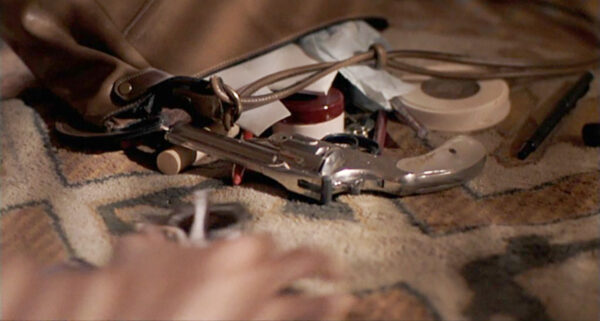
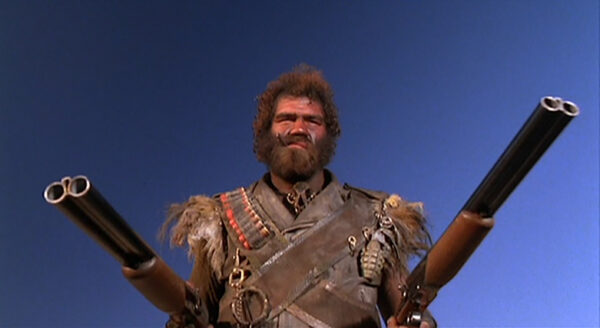


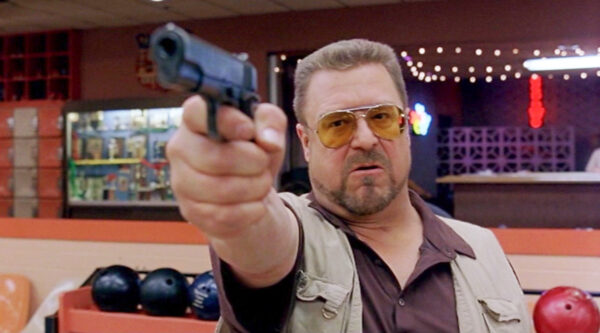
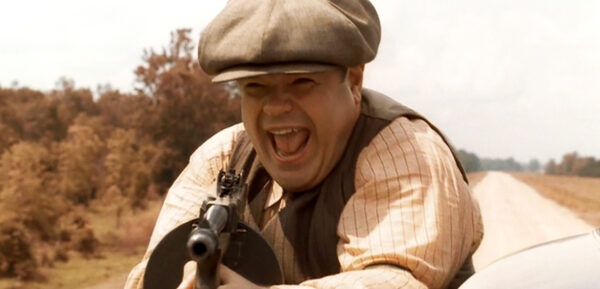
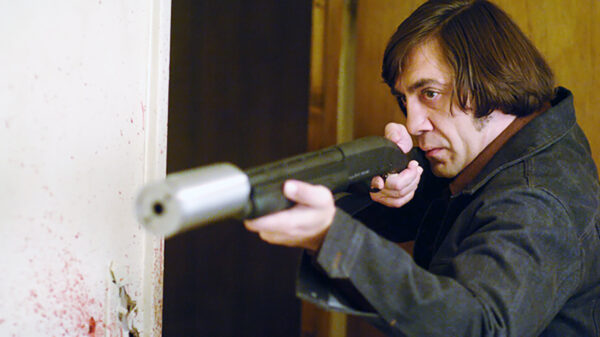
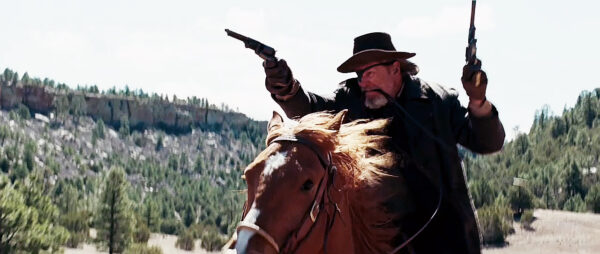
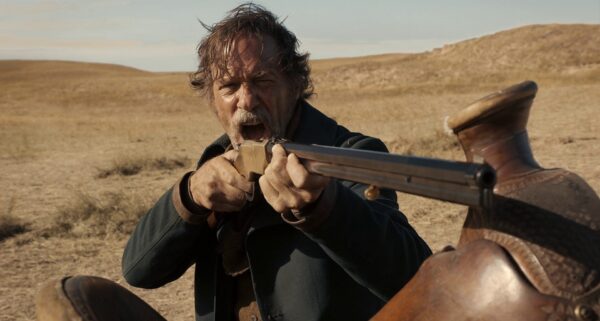




Conversation